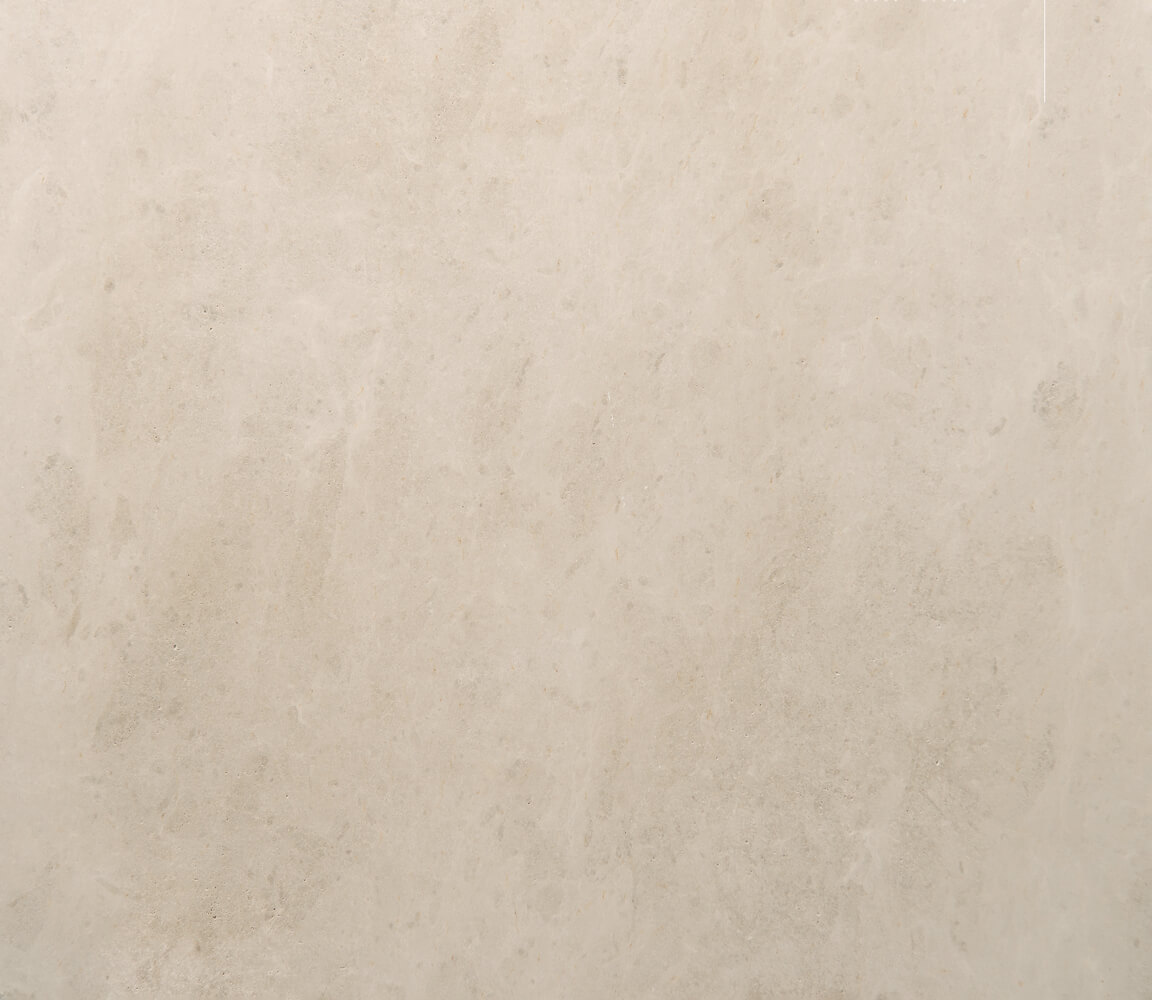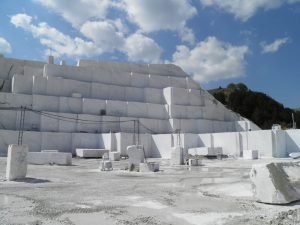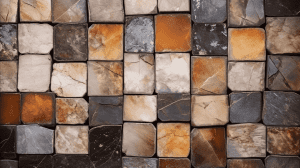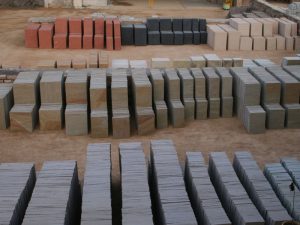Limestones in Iran, are sedimentary rocks composed mainly of calcium carbonate (CaCO3), usually in the form of calcite or aragonite. Limestones in Iran may contain considerable amounts of magnesium carbonate (dolomite) as well; minor constituents also commonly present include clay, iron carbonate, feldspar, pyrite, and quartz.
Most limestones have a granular texture. Their constituent grains range in size from 0.001 mm (0.00004 inches) to visible particles. In many cases, the grains are microscopic fragments of fossil animal shells.
Limestone has two origins: (1) biogenic precipitation from seawater, the primary agents being lime-secreting organisms and foraminifera; and (2) mechanical transport and deposition of preexisting limestones, forming clastic deposits. Travertine, tufa, caliche, chalk, sprite, and micrite are all varieties of limestone.

Iran Calcium Carbonate
Limestones in Iran contain Calcium. According to the latest report of the Statistics Center of Iran, the amount of limestone mineral reserves is 17 billion tons, which is 67% of 25.7 billion tons of our country’s mineral reserves, followed by iron ore with 2.5 billion tons of identified reserves, which constitutes 10% of the total mineral reserves of the country. However, the major producers of lime are in North America and Europe. Besides, limestone suppliers and exporters exist in Asia and the Middle East. The calcium carbonate that is found in Iran has indeed over 99 percentages of purity and whiteness. So, it is considered a valuable commodity to trade and export.
Iran Quicklime
Quicklime, Limestones in Iran, is produced by heating crushed limestone to about 1100 ° C in a shaft or rotary kiln. As the Limestones in Iran heat up, carbon dioxide is released, and calcium oxide remains. After heating, the Quicklime is crushed and milled to a suitable fraction. Quicklime has a wide range of uses in iron and steel, paper and pulp production, treatment of flue gases and water, and other industries. We, SVS company, are able to supply Quicklime in various size ranges from lump size to fine and micronized powder with different mesh numbers into three-layer polypropylene jumbo bags and AD Star bags.
Limestone in Iran has long fascinated earth scientists because of its rich fossil content. Much knowledge of the Earth’s chronology and development has been derived from the study of fossils embedded in limestone and other carbonate rocks. Limestone in Iran also has considerable commercial importance. Limestones enriched in phosphate by the chemical action of ocean waters constitute a principal source of raw materials for the fertilizer industry. When heated to temperatures of 900 to 1,000 °C (1,650 to 1,800 °F), limestones in Iran will dissociate calcium carbonate and yield carbon dioxide and lime, the latter having major applications in the manufacture of glass and in agriculture. Certain varieties of limestones in Iran also serve as building stones; they are widely used for flooring, exterior and interior facings, and monuments.
Uses of Limestone
Limestone in Iran is a rock with a diversity of uses. It could be the one rock that is used in more ways than any other. Most limestones in Iran are made into crushed stone that is used in road bases, railroad ballast, foundation stone, drain fields, concrete aggregate, and other construction uses. It is fired in a kiln with crushed shale to make cement.
Some varieties of limestone perform well in these uses because they are strong, dense rocks with few pore spaces. These properties enable them to stand up well to abrasion and freeze-thaw. Although limestones in Iran do not perform as well in these uses as some of the harder silicate rocks, it is much easier to mine and do not exert the same level of wear on mining equipment, crushers, screens, and the beds of the vehicles that transport it. In many parts of the world, the harder silicate rocks are too far from construction sites to be used economically.
Some additional but also important uses of limestones in Iran include:
Dimension Stone: Limestone is often cut into blocks and slabs of specific dimensions for use in construction and in architecture. It is used for facades stone, floor tiles, stair treads, window sills, and many other purposes.
Roofing Granules: Crushed to fine particle size, crushed limestone is used as a weather- and heat-resistant coating on asphalt-impregnated shingles and roofing. It is also used as a top coat on built-up roofs.
Flux Stone: Crushed limestone is used in smelting and other metal refining processes. In the heat of smelting, limestones in Iran combine with impurities and can be removed from the process as slag.
Portland Cement: Limestone is heated in a kiln with shale, sand, and other materials and ground to a powder that will harden after being mixed with water.
AgLime: Calcium carbonate is one of the most cost-effective acid-neutralizing agents. When crushed to sand-size or smaller particles, limestone becomes an effective material for treating acidic soils. It has been widely used on fields and small plots throughout the world for hundreds of years.
Lime: If calcium carbonate (CaC03) is heated to high temperature in a kiln, the product will be a release of carbon dioxide gas (CO2) into the atmosphere and a residual product of calcium oxide (CaO). Calcium oxide is a powerful acid-neutralization agent. It is widely used as a soil treatment agent (faster acting than aglime) in agriculture and as an acid-neutralization agent by the chemical industry.
Exports of Limestones
In 2021, Iran exported $464k in Limestone, making it the 50th largest exporter of Limestone in the world. In the same year, Limestones in Iran were the 427th most exported product in Iran. The main destination of Limestone exports from Iran are:
Tajikistan ($224k), Kuwait ($198k), Qatar ($37k), and Switzerland ($4.56k).
The fastest-growing export markets for Limestone in Iran between 2020 and 2021 were Tajikistan ($224k), Kuwait ($85.7k), and Switzerland ($4.56k).
Last Word
Limestone in Iran and at SangVarehStone Company is often cut into blocks and slabs of specific dimensions for use in construction and in architecture. You can offer your Limestones for your usage in facades stone, floor tiles, stair treads, window sills, and many other purposes. Just call SVS. This is our pride to provide you with the best.
FAQ
What is a limestone rock?
Limestone is a sedimentary rock composed principally of calcium carbonate (calcite) or the double carbonate of calcium and magnesium (dolomite). It is commonly composed of tiny fossils, shell fragments, and other fossilized debris.
What is limestone formed from?
Limestone is a sedimentary rock, which means it was formed from small particles of rock or stone that have been compacted by pressure. Sedimentary rock is important because it often contains fossils and gives clues about what type of rock was on the Earth long ago.
Why is it called limestone?
So-called because it yields lime when burnt. Another name for it, mostly in American English, is a limerick.
What is limestone powder?
Limestone powder is a by-product of the limestone quarry, and it has been used in cement-based materials for many years. In 1938, Bessey, first reported that CaCO3 could react with cement to form calcium-carbo aluminate.




